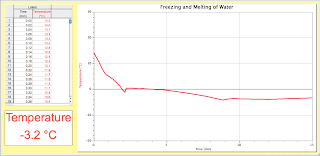 In this lab, we were cross-linking Elmer’s glue with Sodium borate. We were trying to figure out how the physical properties of the polymer change because of cross-linking. Also, we had to find out how adding more agents would change it. We predicted that if we mix the Elmer’s glue with the Sodium borate, then it will change it’s state of matter and the more you add the bigger the change.
In this lab, we were cross-linking Elmer’s glue with Sodium borate. We were trying to figure out how the physical properties of the polymer change because of cross-linking. Also, we had to find out how adding more agents would change it. We predicted that if we mix the Elmer’s glue with the Sodium borate, then it will change it’s state of matter and the more you add the bigger the change.When we added the water to the glue, it’s texture became more like flowing liquid and not like melted marshmallows. Mixing the borax with the other beaker of water was just like mixing sugar or salt into any liquid. When we were pouring the borax into the glue, it made a hole where I was pouring the water/borax solution. Almost instantaneously it began to form a solid form. To the left, is what the solid looked like when we first started stirring.
We performed a “slime test.” On a scale of sliminess of 1 to 5, we gave it a 4. It smelt like glue. It looked like half melted marsh mellows before we rolled it into a ball. Also, it looked like egg whites. When we attempted to bounce it, it would bounce with one large initial bounce then 3-4 small ones. Next, when we tried pulling them apart slowly/quickly they both ripped apart a second or two after we began. When we’d poke our finger through it slowly, the slime would form around it. If we were to do it faster, the finger would poke through nearly instantaneously. For our final test, we had to time how long it’d take for it to flatten. It took 3 minutes 34 seconds. This was my drawing when it first started.
In conclusion, our hypothesis was correct. The glue changed from liquid to solid within seconds of pouring it in. Doing this experiment brought us closer together and made us all more comfortable with each other.





